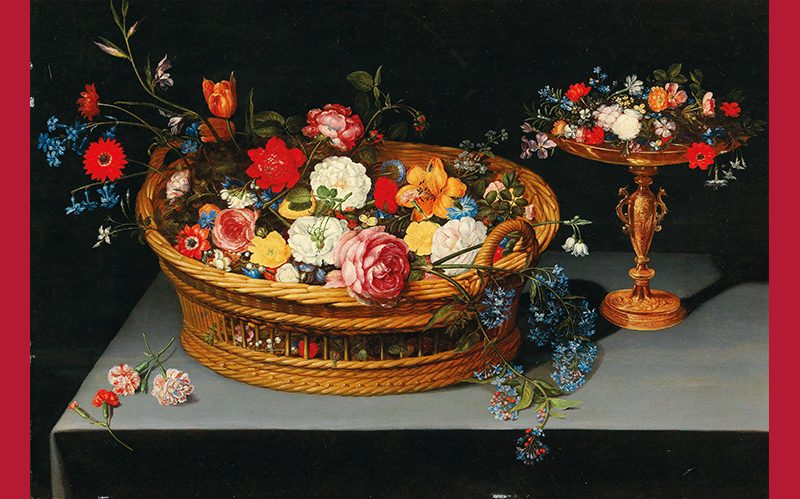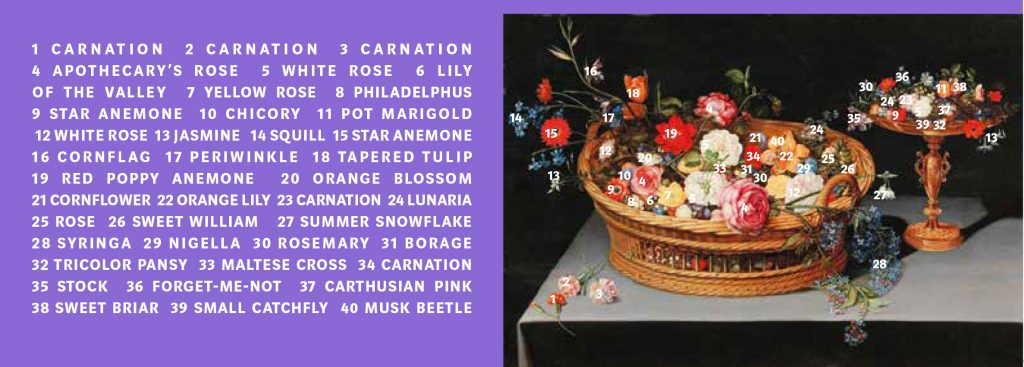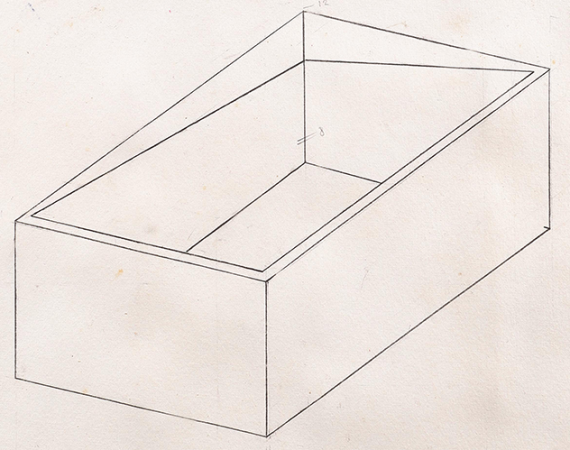
Thirty-nine flowers of different colour, size, form, and, above all, with different blooming times. Jan Brueghel II pieced them together to form a dazzling, though botanically impossible arrangement of flowers that is second to none.
Floral Arrangement
This painting by Jan Brueghel II (1601–1678) depicts nearly forty different types of flowers in floral arrangement. The image does not seem to be out of the ordinary but simply a beautiful array of flowers. However, to the Fleming in the 17th century, this image would have been astounding, because the various flowers could never actually bloom at the same time. The artist had to carefully piece together from sketches of flowers that he had made throughout the year this display of a reality that did not exist. Therefore, it would have been a botanical impossibility for the spectator to have them altogether.
Popular Subjects
Flower still life painting became a very popular subject among 17th-century artist and reflected the concerns of botanists who supplied an ever-demanding market. These botanists started trading in seeds and bulbs in the hope of cultivating the most dazzling new floral variety. By the 1630s, the highest-prized flowers fetched extortionate sums of money. A tulip bulb could cost as much as a fine Amsterdam house.
The idea behind Jan Brueghel’s still life was that the owner of such a painting could enjoy these flowers throughout the year, long after their real-life counterparts had faded away.
AUCTION
Old Master Paintings
23 October 2018, 5 pm
Palais Dorotheum













